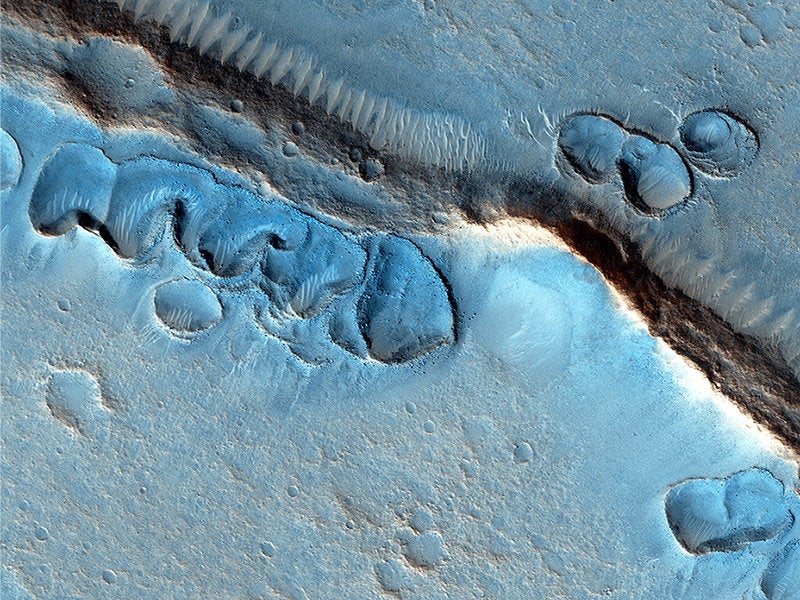Establishing a sustainable colony on Mars would come with incredible challenges, none more pressing than figuring out how to keep inhabitants from starving.
To the delight of sci-fi fans, the innovative approach of fictional astronaut Mark Watney to growing potatoes in the movie "The Martian" might just be the solution.
Scientists at Wageningen University and Research Centre in the Netherlands say they have successfully grown -- and harvested -- several crops, including tomatoes and peas, in simulated Martian and lunar soils.
The goal of the ongoing study is to provide the basis for growing crops on Mars and the moon, the researchers say.
The simulated soils that NASA developed are designed to mimic conditions on the red planet and the moon. The Mars simulant comes from a Hawaiian volcano and the fake moon dirt originates from an Arizona desert.
Dr. Wieger Wamelink, lead researcher of the plant-growth studies, said in a statement that the results of the latest experiment came as a "real surprise." The veggies grown in the "Martian" soil yielded a comparable amount of food to those grown in an Earth compost control.
Improving on a first round of experiments in 2013, Wamelink's team used trays instead of small pots, which helped solve the issue of watering. They added organic material to the simulated soils. Unlike the earlier tests, when numerous plants perished, the veggies not only grew, but flourished.
“It shows that the Mars soil simulant has great potential when properly prepared and watered," said Wamelink of the results, which have yet to be peer reviewed or published.
Of the 10 crop species grown, six -- tomatoes, peas, rye, garden rocket, radish and garden cress -- were harvested. But as tempting as it might have been to indulge in an otherworldly salad, the researchers had to restrain themselves.
“The soils contain heavy metals like lead, arsenic and mercury and also a lot of iron," Wamelink said. "If the components become available for the plants, they may be taken up and find their way into the fruits, making them poisonous."
The team's next experiment, slated to begin in April, will be to determine if the foods harvested from "alien" soils are, indeed, edible. They have set up a crowdfunding site to help pay for their effort.
"If the crops prove to be safe enough to eat, the funders will be invited for dinner where a ‘Martian meal’ will be served that includes the harvested crops; at least for those who dare!" Wamelink said.
The progress of the past few months shows that the push for reaching Mars is on.
In Hawaii, six scientists just reached the halfway point of a year-long mission inside an isolated, solar-powered dome atop the Mars-like Mauna Loa volcano. The goal of the Hawaii Space Exploration and Analog and Simulation is to prepare humans for life on the red planet.
And on March 2, American astronaut Scott Kelly and Russian cosmonaut Mikhail Kornienko returned to Earth after 340 days aboard the International Space Station. The mission will help NASA better understand how the human body reacts and adapts to long-duration spaceflight, as the agency develops capabilities for manned missions to Mars by the 2030s.
Upon his return to Earth, Kelly made clear he thinks putting a man on Mars is possible.
"We're close enough that if we make the choice, I think we can do it," he told CNN.
If and when that happens, peas, arugula and garden cress are on the menu.
What would it really be like to live on Mars? Check out the "Talk Nerdy To Me" episode below to find out.

